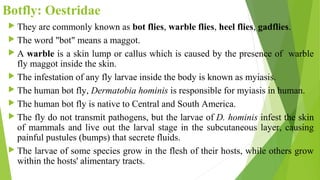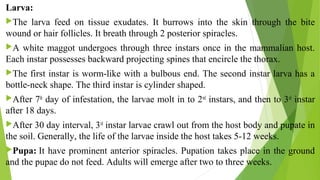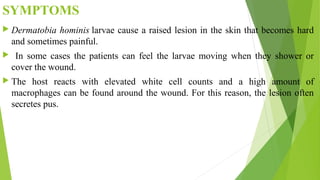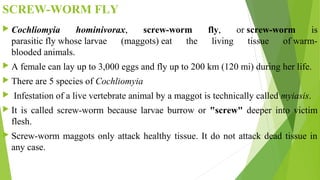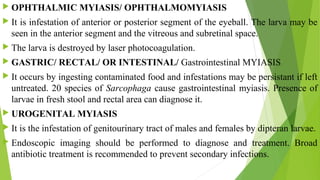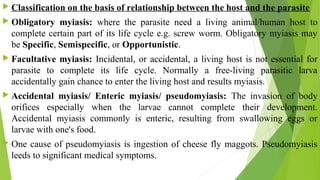Botflies lay their eggs on other insects that come into contact with hosts. The eggs hatch and the larvae burrow into the host's skin, causing painful bumps. They breathe through spiracles and feed on tissue exudates. After several weeks, the larvae exit the host and pupate in the soil. The human bot fly Dermatobia hominis causes a common type of myiasis in parts of Central and South America by infecting humans and other mammals.
